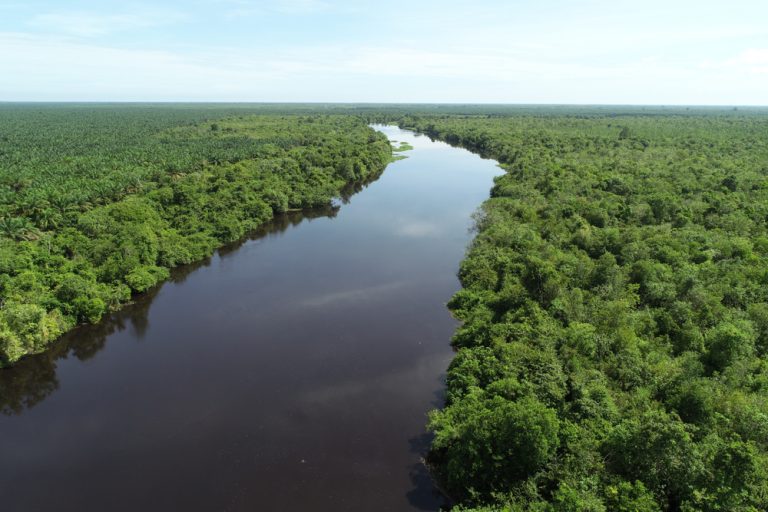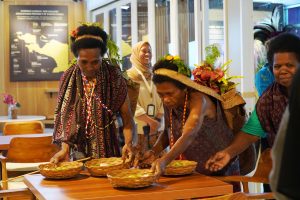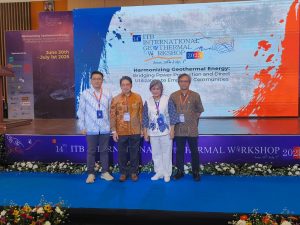Jakarta – Climate change is an important factor in exacerbating conflicts over natural resources. Conditions that trigger conflicts such as the availability of clean water and decreased biodiversity, in some cases, occur due to competition or overlapping rights of various parties in accessing natural resources which are decreasing.
Resolution of natural resource conflicts has the aim of achieving peace and justice for all parties involved in the conflict, as well as managing natural resources in a sustainable manner and avoiding excessive environmental damage. Ending conflict will also improve food security, promote peace, enhance societal well-being, and promote sustainable development.
However, reaching a solution that is mutually agreed upon by the conflicting parties is not an easy task. The Conflict Resolution Unit (CRU) shares their experience in conflict resolution in the following article. It was first published in ‘Layang Damai’, here:
When dealing with land and natural resource conflicts, CRU is often faced with an assumption that we, who come as conflict resolution providers, are also providers of solutions that can solve problems for conflicting parties.
Our mediators who work with us in the field often face these expectations. There seems to be a misunderstanding about the term conflict resolution that we are promoting, when the term is interpreted by some people as a provider of solutions to land and natural resource conflicts.
As a result of this misunderstanding, there were parties who were disappointed and there were even those who even questioned the role of the CRU because it came without offering a solution. “Why go to and talk to the conflicting parties if you don’t have a solution to offer,” is one of the criticisms we received.
That the parties expect a solution is understandable, when the conflict faced by the parties has been going on for a long time. Therefore, unwittingly the attention of each party is only to see and seek their respective solutions (according to their own views) without realising that these choices only consider their own interests and can conflict with the interests of other parties. Thus, when the CRU and/or mediators arrive, there is hope to get a solution in a short time which can be immediately implemented and solves all problems.
Therefore, in Layang Damai this time, we would like to re-explain our role, both as a conflict management organisation and as a mediator. We are a convener or organiser whose role is to bring parties together, so that they can have dialogue in order to be able to find a common ground and common ground between their interests in order to find a solution that satisfies these parties.
It is important to understand, a mediator (and also an institution that supports it) is a neutral party with no interest in the subject matter of the conflict, or what we often call it content neutral. That is, the mediator does not solve the problem, but he helps the parties to see the conflict they are facing as a common problem. The mediator also does not propose a particular solution and also does not argue about the pros and cons of a solution proposed by the parties, but he helps the parties to develop ideas in the form of a choice of solutions and helps the parties assess and sort out the developing options through critical questions.
This attitude is carried over from the assessment process, the preparation of the parties to the end of the mediation process. Meanwhile, the choice of way out or solution was born from an agreement between the parties which was built through dialogues and deliberations facilitated by the mediator.
In short, the role of the conflict management agency (convener) is to create space that allows dialogue, helps the parties to focus on the problem, and facilitates the dialogue process to find mutually agreed solutions. In short, CRU takes care of the process so that the conflicting parties can focus attention on the substance of the problem.
However, building a good conflict management process certainly takes time. The process of handling conflicts that systematically follows the assessment stages, builds relationships between the parties and develops the willingness and commitment of the parties to work together in negotiations, builds shared understanding and insight on the subject matter, assists in the formation and preparation of a negotiating team from each party , and ultimately facilitating the negotiation and planning process that transforms the conflict into mutually beneficial cooperation between the parties, requires adequate time.
We believe that only a good process will achieve good results, even though the process seems to take a long time which might trigger the impatience of the parties and other stakeholders. In our young journey, we have seen too many conflict resolution attempts that have failed because they were carried out in a short and hasty process without proper preparation.
More than that, the best solution is one that is truly considered and considered by the conflicting parties, because they are the ones who really know their interests, they are the ones who will have to implement the agreed solution in the future, and they also have to live with all the results and implications of the agreement. And only with a process that really involves them, the solution that is formulated truly belongs to the parties.
In short, we would like to reiterate, that the best conflict resolution options emerge from the parties involved, while the mediator or mediation service provider helps set up the process and creates an atmosphere conducive to fruitful negotiations between the parties.













